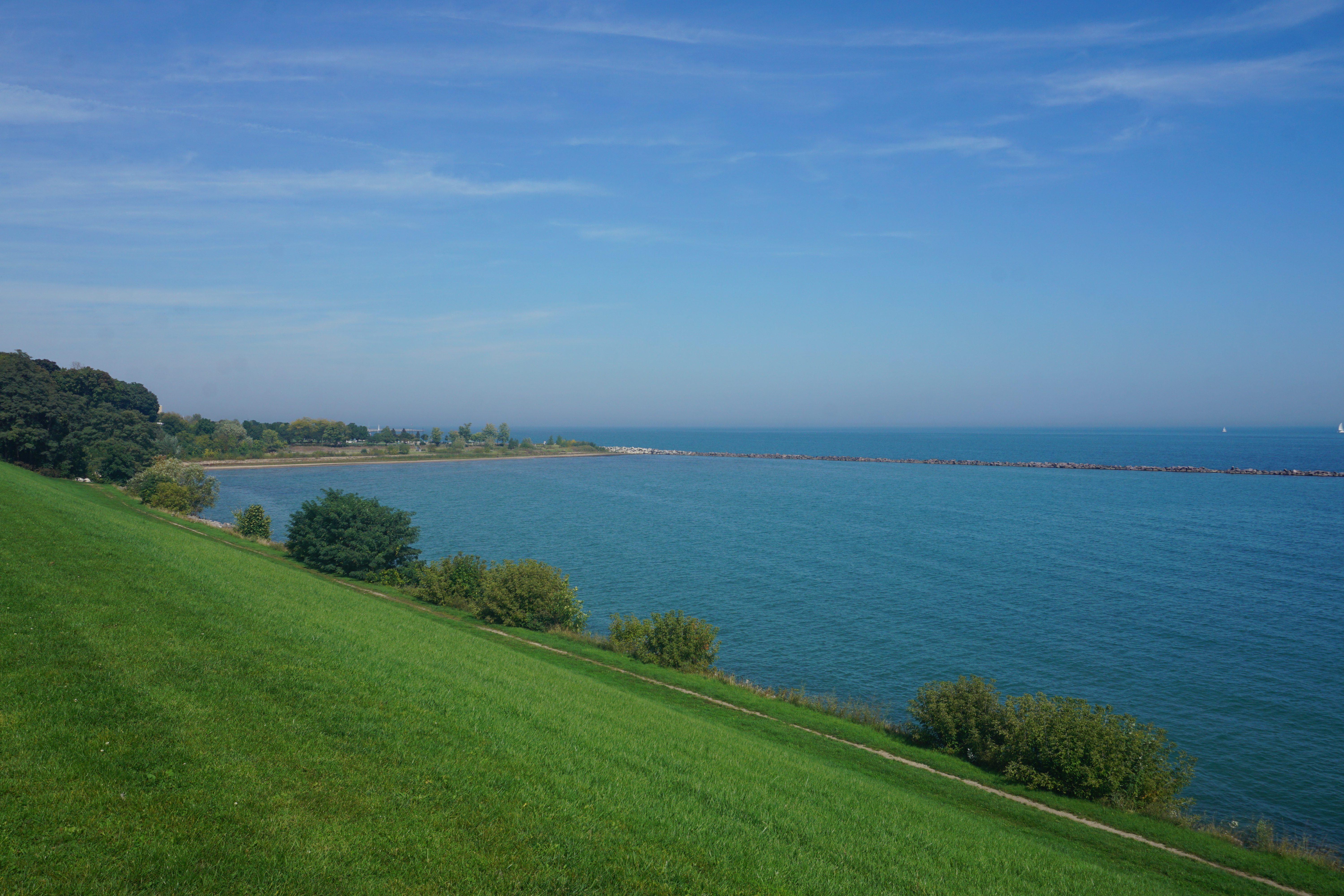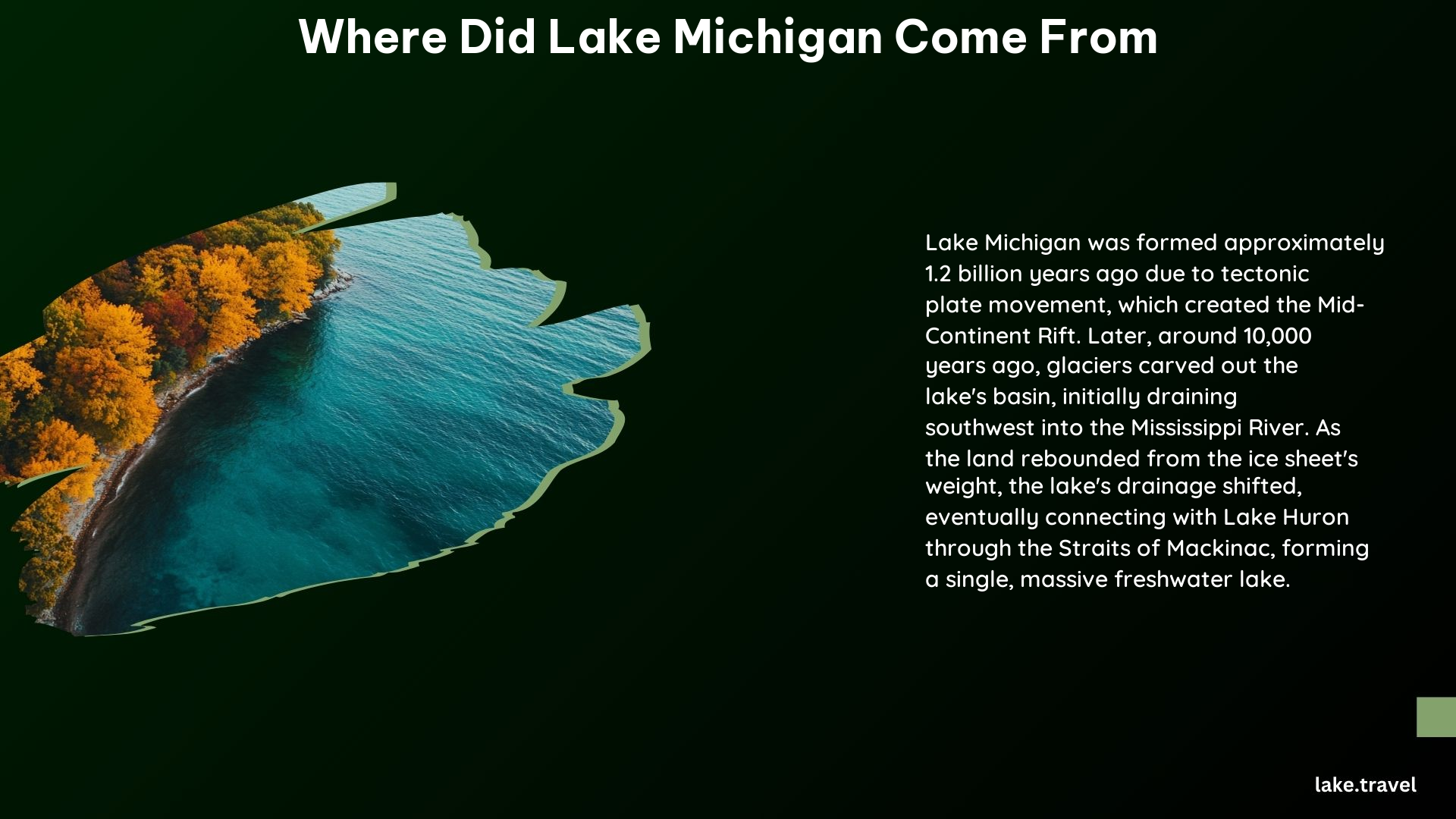Lake Michigan, the second-largest of the Great Lakes by volume and the third-largest by surface area, has a rich history and geological formation. The lake’s origins can be traced back to the Mid-Continent Rift, a geological event that occurred approximately 1.2 billion years ago, and the subsequent shaping by glaciers during the Wisconsin Ice Age.
Geological Formation of Lake Michigan

The formation of Lake Michigan began with the Mid-Continent Rift, a geological event where two tectonic plates were ripped apart. This event occurred around 1.2 billion years ago, creating a depression that would eventually become the basin of Lake Michigan.
Over time, the region experienced various geological changes, including the deposition of sedimentary rocks and the erosion of the land surface. However, the modern shape of Lake Michigan was primarily formed during the Wisconsin Ice Age, which ended around 10,000 years ago.
Glacial Shaping of Lake Michigan

During the Wisconsin Ice Age, massive glaciers covered much of the region, including the area that would become Lake Michigan. As these glaciers advanced and retreated, they carved out the lake’s basin and shaped its shoreline.
The melting of these glaciers around 10,000 years ago unveiled Lake Erie and the southern portion of Lake Michigan, which was then known as Lake Chicago. Initially, these lakes drained to the southwest, out the Maumee-Wabash-Ohio and Des Plaines-Illinois rivers, respectively, to the Mississippi River.
Over time, the land rebounded from the weight of the ice sheets, and the lakes’ drainage patterns changed. Lake Michigan eventually assumed its present shape around 3,000 years ago.
Hydrological Connection to Lake Huron
Lake Michigan is hydrologically connected to Lake Huron through the Straits of Mackinac, forming a single body of water known as Lake Michigan–Huron. This connection gives the two lakes the same surface elevation, making them effectively a single lake system.
Human History of Lake Michigan
The earliest known human inhabitants of the Lake Michigan region were the Hopewell Indians, whose culture declined after 800 AD. Later, the region was home to the Late Woodland Indians, followed by European explorers in the 1600s. The French established trading communities and ports, such as Green Bay, during the late 17th and early 18th centuries.
Modern Significance of Lake Michigan
Today, Lake Michigan is an essential part of the ecosystem and economy of the surrounding regions. It supports a variety of fish species, including trout, salmon, and smallmouth bass, and is home to diverse wildlife and bird populations. The lake also plays a significant role in shipping and commerce, with major port cities like Chicago, Milwaukee, and Gary.
Interesting Facts about Lake Michigan
- Lake Michigan is the only Great Lake located entirely within the United States.
- It has a surface area of 22,300 square miles (58,000 km²) and a maximum depth of 925 feet (282 meters).
- The lake’s water temperature can reach the 60s and 70s in July and August, and it has an unusual circulatory pattern.
These details highlight the complex geological and human history of Lake Michigan, making it a fascinating and important natural feature of North America.
Reference:
– The Geological History of the Great Lakes
– Lake Michigan
– Lake Michigan: Facts, History & Geography
